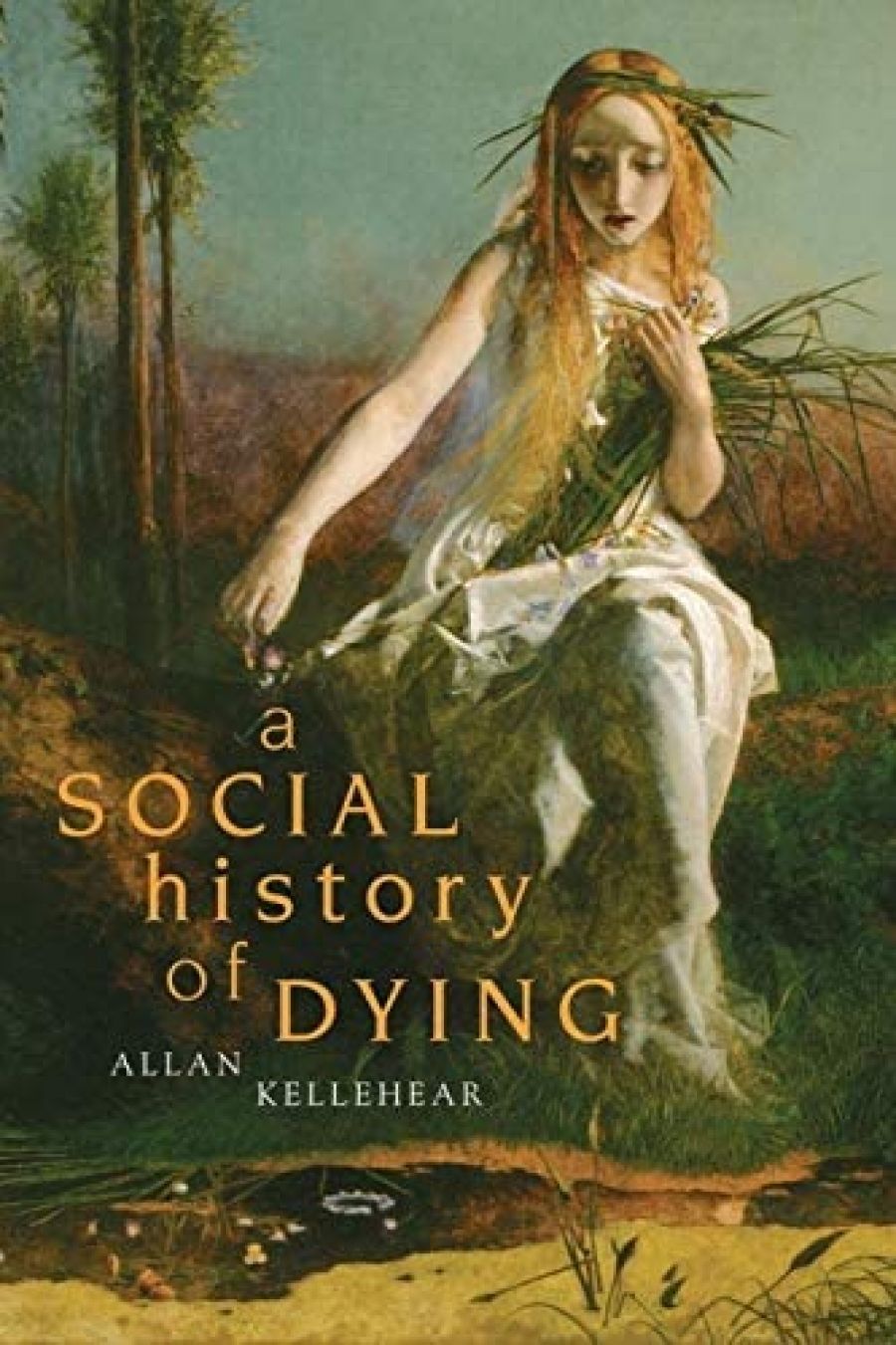
- Free Article: No
- Contents Category: Society
- Review Article: Yes
- Article Title: Cosmopolitan dying
- Online Only: No
- Custom Highlight Text:
It is remarkable how death has loomed so large in the social sciences over the past couple of decades. From mangled bodies to mediated mass killings, from the medicalisation of dying to the ‘snuff’ movies of hardcore porn: death obsesses the sociological imagination.
- Book 1 Title: A Social History of Dying
- Book 1 Biblio: CUP, $49.95 pb, 297 pp, 9780521694292
A Social History of Dying is one of the more distinguished books to address the sociology of death in recent times. Allan Kellehear brings a wealth of sociological insight to bear on death and dying in Sigmund Freud and Sir James Frazer, Norbert Elias and Erving Goffman, Zygmunt Bauman and Lord Anthony Giddens. If there is a central theme in this dense, sprawling review of dying behaviour over the last two million years, it is the way that death is always culturally encoded, grounded in social context.
‘To give death a certain kind of purity,’ wrote Maurice Blanchot, ‘was always the task of culture: to render it authentic, personal, proper.’ It is the job of culture, in other words, to rescue us from the terrors of death. Culture both structures social practices and rituals relating to mortality and suppresses our awareness of the frail character of such meaning. This, no doubt, is why death always has the last word against culture, revealing as it does the ultimate uncontrollability of our lives.
Kellehear traces cultural perceptions of death from otherworld journeys to absolute nothingness, ‘the end’. In the broadest of terms, trends in social experiences of mortality have gradually shifted towards a ‘taming’ or ‘domestication’ of the more traumatic, disruptive or embarrassing aspects of the dying. Modernity’s obsession with death-avoidance is such that dying has been transformed from a community affair to a medical challenge.
In our own time – what Kellehear provocatively and poignantly calls the era of ‘cosmopolitan dying’ – we witness the emergence of approved privatised strategies for ‘good deaths’ or ‘well-managed deaths’. For Kellehear, the world of advanced capitalism has eroded communal support for dying by outsourcing it to medical professionals, which in turn leads to the deterioration of cultural awareness of death. From people dying of AIDS or poverty to those in concentration camps, death is ‘removed’ from the wider social radar and circumscribed to a narrow institutional definition involving end-of-life medical supervision. In this social context, death becomes impersonal. Socially respectable strategies remain available, most notably with the spread of nursing homes. And yet the human element of dying is left out in such privatised adventures. As Kellehear argues: ‘There is a widespread fantasy that one might reach eighty or ninety years in good health and die in one’s sleep. But many of the dying aged become increasingly incapacitated and then institutionalized ... The benefits of living long are now being balanced, often towards imbalance, of living too long.’
According to Kellehear, the core dread of modernity is that of the shameful death. From nursing homes to detention centres, practices of dying have become increasingly unconnected from their biological, psychological and interpersonal roots. Sequestration rules. ‘Large proportions of our dying,’ writes Kellehear, ‘are now commonly hidden away from our communities. We do not easily witness the massive numbers dying in nursing homes, in developing countries with great poverty, or in totalitarian moments in our recent history.’
All of these developments give rise to what Kellehear terms ‘the disintegration of dying’, which is a fertile notion. Yet it should be said that this specific focus on the sequestration of dying in modern societies is hardly world-shaking news to sociologists. This is a theme that has been extensively explored in much recent social theory, particularly in the work of Giddens and Bauman. There is the sense then of Kellehear applying contemporary sociological theories to unconventional materials: this allows him to produce some interesting insights, but few of his claims are as arresting as the conceptual departures of recent social theory in this area.
Where Kellehear is on stronger ground is in the exploration of shameful deaths. His scooping up of recent research on the staging of death leads to some genuinely original insights. His reflections on a 99-year-old nursing home resident, James, are notable in this connection. A talkative and social person by nature, James spent his final years at a nursing home in conditions of rapid deterioration – increasingly deaf, confused and demented.
In short, then, the contemporary West devalues death – so much so that dying is presented as just another episode in modernity’s dull quotidianity. Kellehear’s deconstruction of death is generally illuminating, but I wish that he had delved deeper. In the impersonal world of the nursing home, for instance, is it bureaucracy or the privatised market that dehumanises dying patients?
A Social History of Dying is never less than impressive in the way that it traverses so much historical material in an engaging manner. And yet, paradoxically, the book’s identification of the spread of privatisation in our own age of cosmopolitan dying remains constrained by a limited field of sociological investigation. As a sweeping historical tale of the sociology of death, Kellehear’s book is invaluable; as a critique of the social forces sustaining our culture’s denial of death, I suspect it is a missed opportunity.


Comments powered by CComment